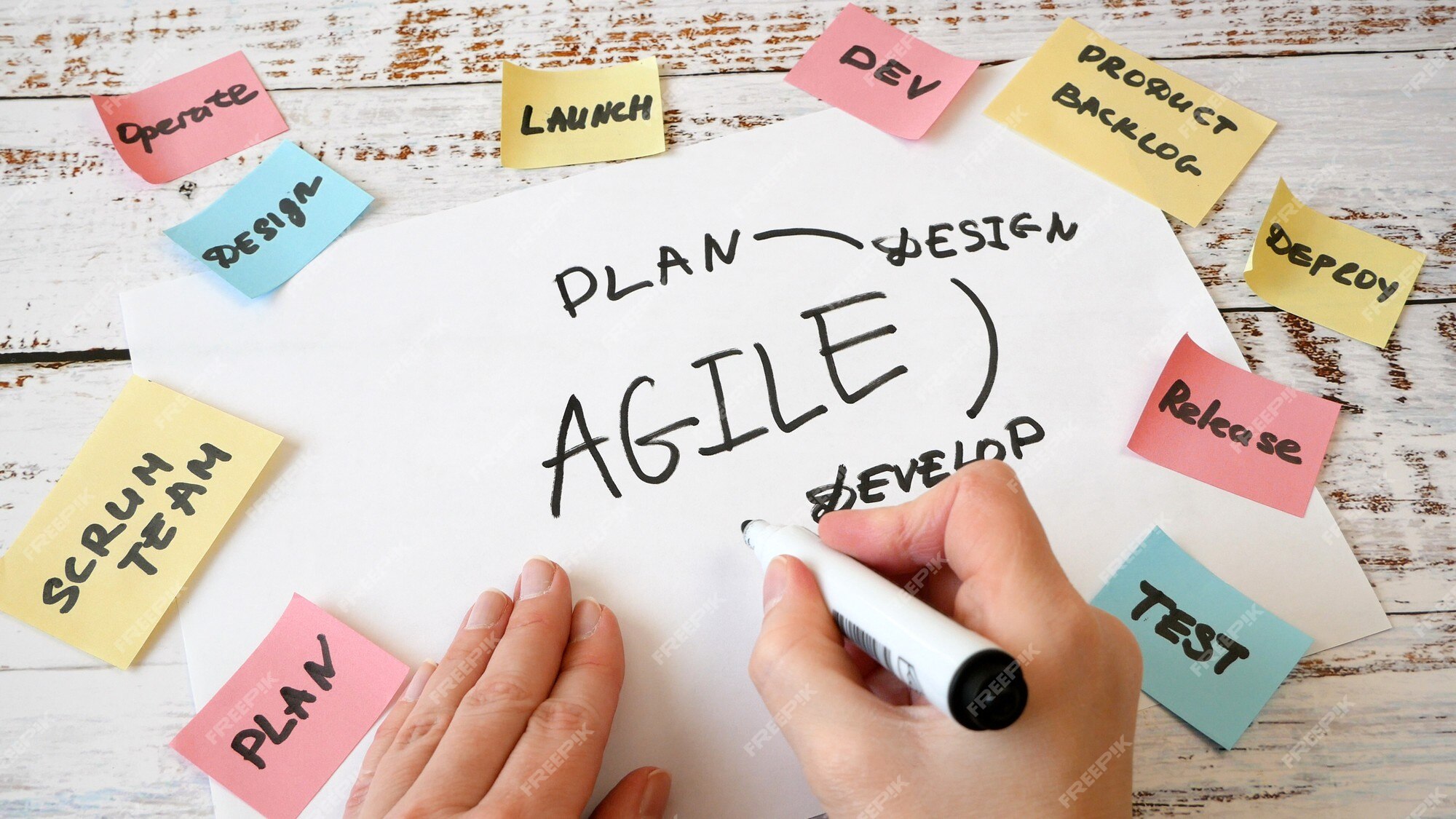Introduction:
Embark on a transformative journey into the brilliance of Agile with me. By the end of this chapter, you’ll gain insights into the history, principles, and values of Agile, focusing on the Agile Manifesto. We’ll unravel the core values and principles, exploring their profound impact on project management, all while emphasizing my preference for Scrum project management and optimized software delivery.
The Agile Journey: A Brief History and Evolution:
My expedition into Agile began as I recognized the limitations of traditional development methodologies. Drawing inspiration from pioneers like Kent Beck, Martin Fowler, and Ward Cunningham, I set out on a quest for a more adaptive approach. The Agile Manifesto, crafted at a pivotal gathering in Snowbird, Utah, marked the genesis of a new era, extending Agile beyond its software roots to various industries.
Agile Manifesto: Core Values and Principles:
At the heart of my journey lies the Agile Manifesto, a guiding beacon that articulates the core values and principles of Agile. Let’s delve into the four core values and twelve principles that resonate deeply with me:
- Individuals and Interactions over Processes and Tools: Collaboration and communication form the bedrock of my approach, fostering a dynamic team environment crucial for Scrum project management success.
- Working Solutions over Comprehensive Documentation: Tangible outcomes drive my passion for Agile, ensuring a focus on value delivery, an essential aspect of optimized software delivery.
- Customer Collaboration over Contract Negotiation: My path is guided by customer-centricity, placing customers at the forefront to ensure products align closely with their needs and expectations.
- Responding to Change over Following a Plan: Adaptability is my mantra, acknowledging change’s inevitability and prioritizing flexibility, core to successful Agile implementation.
Twelve Agile Principles:
Now, let’s integrate the twelve principles providing a detailed framework for my Agile journey:
- Customer Satisfaction through Continuous Delivery: My commitment to customer satisfaction drives early and continuous delivery, aligning with the iterative approach of Scrum.
- Welcome Changing Requirements: Embracing change fuels my competitive edge, harnessing it for customer advantage, a cornerstone of my Scrum project management philosophy.
- Frequent Delivery of Working Software: Rapid progress through regular delivery of working software, preferred in Scrum, propels my journey forward.
- Collaboration between Business and Developers: Daily collaboration fosters alignment, a vital component of my successful Scrum implementation.
- Building Projects around Motivated Individuals: Empowering motivated individuals within Scrum teams drives innovation and excellence in my Agile journey.
- Face-to-Face Communication: Direct communication fosters understanding and alignment, essential in my Scrum teams.
- Working Software as the Primary Measure of Progress: Tangible progress is my benchmark, with working software serving as a key metric in my Agile journey.
- Maintain a Sustainable Pace of Work: My commitment to sustainable development ensures consistent value delivery over time.
- Continuous Attention to Technical Excellence: Quality and technical excellence are my guiding principles, essential for customer satisfaction and loyalty.
- Simplicity – the Art of Maximizing Work Not Done: Simplifying processes maximizes efficiency and focus, a key principle in my Agile journey.
- Self-Organizing Teams: Empowering self-organizing teams fosters autonomy and adaptability, driving success in my Agile projects.
- Regular Reflection and Adjustment: Continuous improvement through reflection and adjustment propels my journey towards mastery.
Benefits of Agile: General Overview:
Before we delve into a comparative analysis with waterfall, let’s explore the overarching benefits of Agile methodologies, resonating deeply with my Agile journey:
- Enhanced Flexibility and Adaptability: Agile’s iterative approach enables quick adaptation to changing requirements, a hallmark of my Scrum project management style.
- Improved Collaboration and Communication: Emphasis on collaboration enhances communication within my Scrum teams, ensuring alignment and efficiency.
- Faster Time-to-Market: Incremental delivery and rapid feedback in Agile methodologies reduce time-to-market, aligning with my preference for swift and efficient software delivery.
- Increased Customer Satisfaction: Customer collaboration ensures products closely align with their needs, enhancing satisfaction and loyalty.
Benefits of Agile over Waterfall:
Now, let’s dissect the advantages Agile holds over the traditional waterfall model, resonating deeply with my Agile journey:
- Reduced Project Risk: Agile’s iterative nature reduces project risk, allowing early identification and mitigation of issues, critical in my Scrum project management approach.
- Increased Visibility and Transparency: Agile’s regular reviews and demonstrations provide enhanced project visibility, fostering transparency and stakeholder engagement, a cornerstone of my Agile journey.
- Customer-Centric Approach: Agile’s focus on continuous customer collaboration ensures products meet expectations, enhancing customer satisfaction and loyalty, driving success in my Agile projects.
- Quicker Response to Change: Agile’s flexibility allows swift responses to changing requirements and market conditions, aligning with my preference for adaptability and agility in my Agile journey.
Conclusion:
As we conclude this post, envision an Agile mindset that propels projects toward unprecedented success. The journey has just begun, and subsequent chapters will delve deeper into Agile methodologies, frameworks, and best practices. Join me in embracing the agility that will unlock the full potential of this dynamic approach, propelling our projects to new heights of mastery. Expect an exploration of Scrum, Agile frameworks, and real-world applications, bringing you closer to the pinnacle of Agile brilliance.
